![]()
![]()
![]()
Use LEFT and RIGHT arrow keys to navigate between flashcards;
Use UP and DOWN arrow keys to flip the card;
H to show hint;
A reads text to speech;
15 Cards in this Set
- Front
- Back
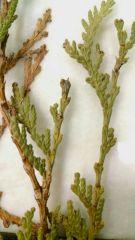
|
Didymascella thujina - western redcedar - 1 year-old foliage, turns bleach and tan with olive brown or black fruiting bodies - especially problematic in nurseries |
|
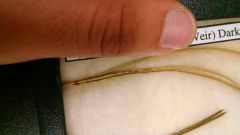
|
Elytroderma deformans - affects 2 and 3 needle hard pines, especially Ponderosa and lodgepole - fruiting bodies in a line on needle - forms a broom on branch ends - damage is greatest on young trees |
|
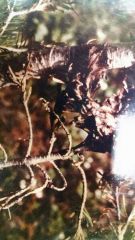
|
Herpotrichia coulteri - all conifers - brown felt mats on lower branches exposed to snowpack causing branch death - can be problem in nurseries |
|
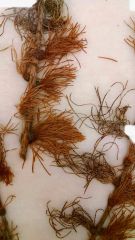
|
Hypodermella laricis - larch - short needles turn brown and die early in spring and bear fruiting bodies - doesn't kill, but can cause reduced growth |
|
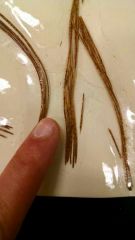
|
Lophodermium pinastri - hard pines, esp red, Scots, and Monterey - so major damage is confined to nurseries - black fruiting bodies - alternating spots and stripes |
|
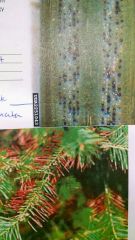
|
Phaeocryptopus gaeumanni - Douglas-fir - infects new needles which turn yellow and are cast 2-3 years later - small black fruiting bodies in lines blocking stomata |
|
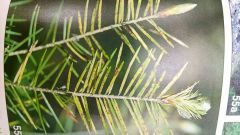
|
Rhabdocline pseudotsugae - Douglas-fir - repeated severe infection will almost totally defoliate - orange pustules on upper sides of needles - less severe in coastal areas |
|
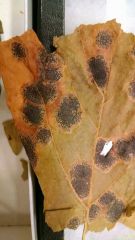
|
Rhytisma punctatum - maples - no adverse long-term effects - doesn't release spores until leaves have fallen |
|
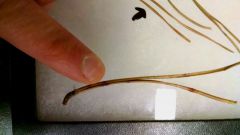
|
Mycosphaerella pini - hard pines; radiata pine - results in early needle drop - severe infection causes slowed growth leading to tree death - older needles close to trunk will be more brown - red bands across needles |
|
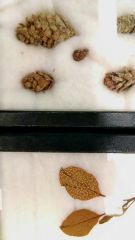
|
Chrysomyxa pirolata - spruce cones; telial host: wintergreen - damage causes cones to open early, most not producing viable seed - especially bad for seed orchards |
|
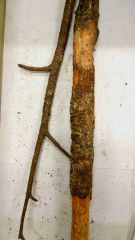
|
Cronartium coleosporiodes - hard pines; telial host: Indian paintbrush - damage causes girdling on young lodgepole, deformation when older - blistered area is 10x as long as it is wide - damage causes girdling on young lodgepole, deformation when older |
|
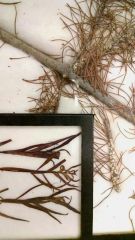
|
Cronartium comandrae - hard pines, 2+3 needle pines; telial host: toadflaxes - damage on trees of all ages and sizes - cankers result in growth defects, mortality - aeciospores are pear-shaped |
|
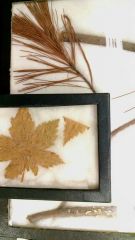
|
Cronartium ribicola - 5 needle pines (whitebark, white pines); telial host: Ribes spp. - damage is swelling and cankers on branches and mainstem resulting in extensive mortality - trees are infected through stomata - pruning can help if done early enough - basal stem cankers can be resinous |
|
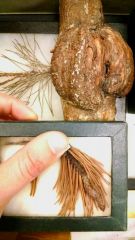
|
Endocronartium harknessii - hard pines, no telial host - rust on a gall - galls on mainstem of young trees causes mortality - otherwise, damage form, lumber content and growth rate |
|
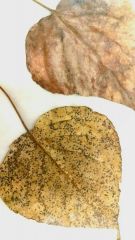
|
Melampsora occidentalis - conifer needles; telial host: cottonwood - yellow spots on the upper side, orange powdery pustules on lower side - damage is severe defoliation |

